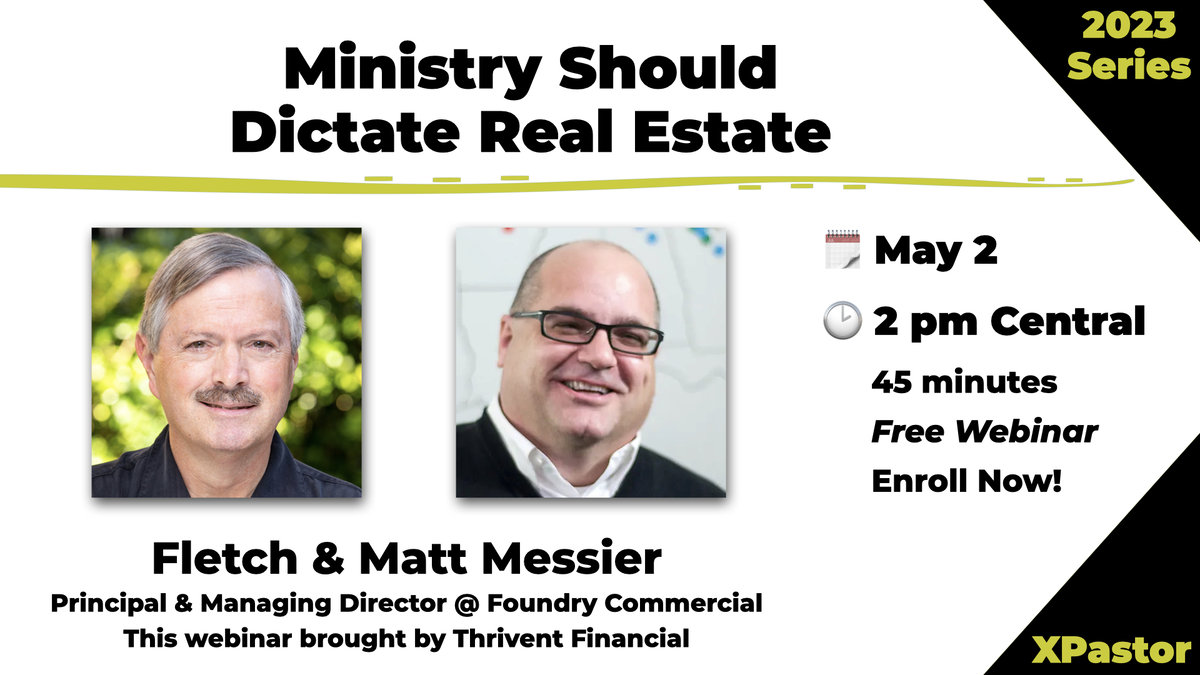No two church plants are exactly the same. People, communities, economics and ministry purpose are only a few of the many variables church planters must work within. While God’s purpose should be the centerpiece of every ministry initiative, many successful efforts have found that using a systematic “checklist approach” to identify and rate potential facilities has greatly contributed to achieving their ministry goals.
But what does that systematic effort look like in practical terms?
For more than 28 years, my company, ChurchPlaza, has worked with tens of thousands of churches, including many church plants, as they made facility and product decisions. Additionally, my wife and I have been centrally involved in a church plant that began in our home and successively grew through temporary arrangements from a rented public school facility, a Christian teen center, and buying and renovating a private school. Finally, we were able to make a land purchase, design and build our own facility. We’ve had a lot of personal experience in making the wrong decisions!
In the following paragraphs, I’ve attempted to capture and present the key elements of the best practices that have generated the best results for the participating church plants and ministries.
Location, Location, Location
Just as location is usually the most important variable in a secular real estate decision, so it is with a church plant. For most church plants, that usually means attaining the most visibility you can afford, although some unique ministries may not share that same need.
Generally speaking, new churches should be highly visible. Locations that are on main streets with drive-by traffic, or easily accessible and visible from thoroughfares or interstates, contribute to the exposure your church plant will have—today and tomorrow.
We live in an area that has seen significantly escalating land costs over the past twenty years. Those churches with vision and courage were able to obtain locations of greatly enhanced visibility by looking closely at local governmental strategies and road building plans. By identifying the “path of progress,” they were able to make wise economic and demographic decisions that were a good decision five years ago, but a brilliant one today.
Explore All Your Location Options
In today’s changing real estate markets, you may have many different choices in where to locate your church plant—and many you may not have initially considered. Each will have advantages and disadvantages. Evaluate each from the perspective of your unique ministry and budget.
Be sure to consider all the possession alternatives including rental, ownership, lease, and option to purchase.
Possibilities Include:
Schools (Public, Private, Colleges, Universities, Day Care)
Historically, there has been a bias regarding the use of public school facilities for church use. Today, however, many public school districts short of funding are aggressively searching out lease and rental relationships that fit building use schedules. Great locations, community awareness, and clean facilities all make this both a Sunday and evening option.
Public Service Facilities (YMCA, Public Government, Libraries, etc.)
Public service facilities are great options. Most contain public meeting spaces. When approached gently, the facility’s management can be enthusiastic, especially if the church plant has outreach activities that support that public service organization’s purpose.
Gymnasiums/Health Clubs
A good option if you can find a six-day facility and you are only looking for Sunday worship space. Be attentive of the “gym odor” and general cleanliness of the facility.
Movie Theaters
Last week, my wife and I went to the movies and were surprised to see two ads during the previews directed at leasing the theater for faith organization purposes. Given the comfortable seating, easy access, restrooms and other comforts, this might be a perfect option for a new church plant … especially if your congregation loves their popcorn.
Night Clubs/Dance Clubs
I’ll admit this was at first a turn off for me, but I’ve seen two church plants in our area that have used Night Clubs for their Sunday worship. Because they employed a Willow Creek style worship service along with a coffee house congressional seating approach, they had a good match with the facility. They may have even found some new attendees wandering into the early service.
Dance/Karate/Yoga Studios
Like childcare facilities, open clean spaces like these studios are usually available if you can solve the adult seating requirements.
Empty Food/Drug Stores
These fit well if your church plant is able to manage a long term lease or purchase. Many of these abandoned locations are owned by large corporations that have depreciated business value. The owners will sometimes take a less than market lease or purchase valuation rather than have the building stand empty.
Be sure to consider the following with each facility:
- Is the facility located in a safe and well-lit area?
- Is the building capacity suitable for your ministry (adults, children, teens)?
- Is there adequate parking?
- Will the electrical capacity support your worship style?
- Is the atmosphere of the neighborhood conducive to a church plant?
- Is there minimal conflict between church operations, traffic and neighbors?
- Are there adequate restroom facilities?
- Have you considered all applicable zoning and signage codes?
Lease, Rent or Purchase?
Most church plants I’ve observed over the years don’t have the economic luxury of purchasing a facility. Further, there is recognition by many today that brick and mortar purchases are not always the best methodology to support their ministry objectives. Here are some relative advantages and drawbacks of choosing a short or long-term facility commitment.
Short-term (one year or less) commitments usually allow for a greater choice of facility options and can bring good economic value. At the same time, short-term facilities are normally only available for specific hours and days of use and the lack of permanence and continuous visibility can be a significant drawback to your ministry purpose. Keep in mind that set up, take down and move efforts for worship and other church activities can be a real burden on a new congregation.
Long-term facilities usually send a message of permanence to the very community and demographic your plant is targeting. Longer leases also allow for better strategic and space planning. With many shopping mall, warehouse and movie theatre relocations taking place today, some amazing and cost effective opportunities can be available to an innovative congregation.
While I believe that “the church” is not a descriptor of the building but rather the people inside the building, I have observed a correlation between successful church plants and the use of a systematic approach to match a potential facility with the church plant’s ministry. Many successful church plants have followed a form of the process outlined above; my prayer is that God will bless you in your efforts!











